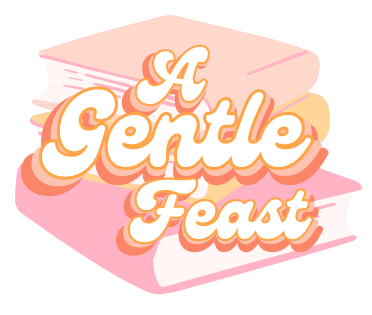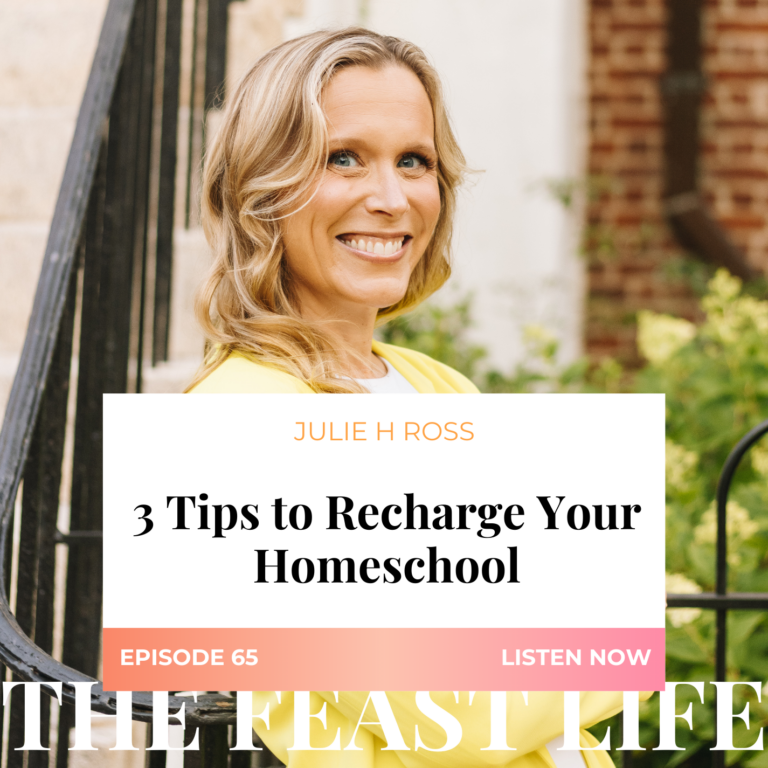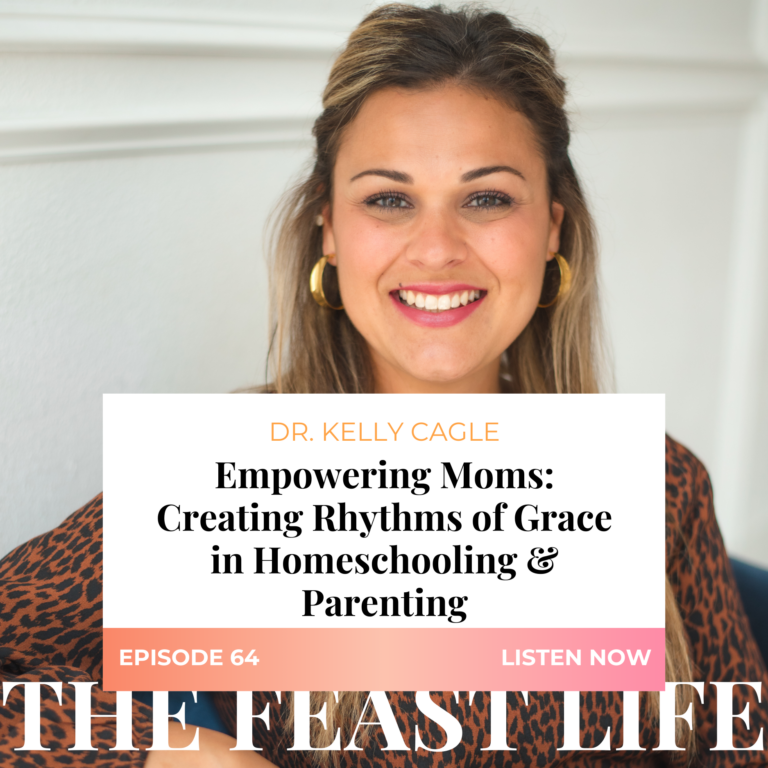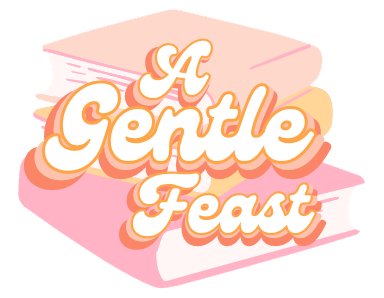When I first heard about Charlotte Mason at the beginning of our homeschooling journey, I heard about a practice called narration. I assumed it was writing or telling a summary. So that is what I did. Then I began to worry that it wasn’t enough and went back to the trusted support of a former PS teacher – the comprehension questions and study guides. It wasn’t until several years in that I realized the deadening effect these were having on my girls’ love for learning. As I jumped into the deep end of the Charlotte Mason method, I realized I was missing the true purpose and method of narration. I am writing this post to help those who might need to see everything spelled out on this topic in an orderly fashion. Narration is truly the foundation of a Charlotte Mason method (of course under-girded by her 20 principles) and is needed for the other aspects of the feast to be properly supported and flourish.
1. Narration is foundational to “the act of knowing.” This is the student’s self education. During a narration, students take what was read to them or what they read themselves and “own it.” After thinking and chewing on the material, they “digest” it by retelling it in their own words. It is not a summary or a play-by-play of events.
“As we have already urged, there is but one right way, that is, children must do the work for themselves. They must read the given pages and tell what they have read, they must perform, that is, what we may call the act of knowing” (Vol. 6, p. 99).
2. Narration should be required after a single reading. This builds the habit of attention.
“He should be trained from the first to think that one reading of any lesson is enough to enable him to narrate what he has read, and will thus get the habit of slow, careful reading, intelligent even when it is silent, because he reads with an eye to the full meaning of every clause” (Vol. 1, p. 227).
3. Since narration is so powerful, there is no need for comprehension questions or oral lectures. Good-bye study guides:)!
“When a child is reading, he should not be teased with questions as to the meaning of what he has read, the signification of this word or that; what is annoying to older people is equally annoying to children” (Vol. 1, p. 228). (Don’t you just love Charlotte’s dry sense of humor? I love this lady!)
“The most common and the monstrous defect in the education of the day is that children fail to acquire the habit of reading. Knowledge is conveyed to them by lessons and talk, but the studious habit of using books as a means of interest and delight is not acquired” (Vol. 1, p. 227).
4. Narration is a habit that takes time to build.
“The period of a child’s life between his sixth and his ninth year should be used to lay the basis of a liberal education, and of the habit of reading for instruction” (Vol. 1, Preface).
- On a personal note, it took about 2 months for my first grader to be able to narrate. Before then, after every reading, I would ask,”What happened?” She would respond, “I don’t know.” I would simply shut the book and say, “That’s too bad. You missed a good story.” Right at the point when I thought I was going to lose it, she looked at me with a smile on her face when she responded “I don’t know.” I asked, “Really?” Then she started laughing and gave me a very thorough retelling of The Burgess Bird Book. Yes, Charlotte was right. Children will develop when they are ready.
5. Narration may be scaffolded by pre and post reading activities.
Pre-reading:
Step 1 – Ask the children to remember what happened during the last reading.
“Before the reading for the day begins, the teacher should talk a little (and get the children to talk) about the last lesson, with a few words about what is to be read, in order that the children may be animated by expectation; but she should beware of explanation, and, especially, of forestalling the narrative” (Vol. 1, pp. 232, 233).
Step 2 – Write key names, places, words on a whiteboard so the students can refer to these during the reading.
“Proper names are written on the blackboard; and, at the end, children narrate the substance of the lesson” (Vol. 3, p. 280).
Post-reading:
Step 1 – Have the students narrate. If you have multiple children listening, they can take turns. Do not interrupt, correct, or explain during a child’s narration.
Step 2 – Review what was stated in their narrations. Illustrations or diagrams may be helpful.
Step 3 – If a natural conversation develops, continue a brief discussion of the reading.
“When the narration is over, there should be a little talk in which moral points are brought out, pictures shown to illustrate the lesson, or diagrams drawn on the blackboard” (Vol. 1, p. 233).
“Then the teacher will read the Bible passage in question which the children will narrate, the commentary serving merely as a background for their thoughts. The narration is usually exceedingly interesting; the children do not miss a point and often add picturesque touches of their own. Before the close of the lesson, the teacher brings out such new thoughts of God or new points of behavior as the reading has afforded, emphasizing the moral or religious lesson to be learnt rather by a reverent and sympathetic manner than by any attempt at personal application” (Vol. 6, p. 163).
6. Time for narration is built into the short lesson time.
“For this reason, reading lessons must be short; ten minutes or a quarter of an hour of fixed attention is enough for children of the ages we have in view, and a lesson of this length will enable a child to cover two or three pages of his book. The same rule as to the length of a lesson applies to children whose lessons are read to them because they are not yet able to read for themselves” (Vol. 1, p. 230).
7. Narration necessitates quality living books used for lessons.
Go find a textbook, read a page and see if you can narrate what happened. I tried it. It was very difficult and I have many more years of schooling than my children.
“This is what we have established in many thousands of cases, even in those of dull and backward children, that any person can understand any book of the right calibre (a question to be determined mainly by the age of the young reader); that the book must be in literary form; that children and young persons require no elucidation of what they read; that their attention does not lag while so engaged; that they master a few pages at a single reading so thoroughly that they can ‘tell it back’ at the time or months later whether it be the Pilgrim’s Progress or one of Bacon’s Essays or Shakespeare’s plays” (Vol. 6, pp. 291, 292).
- You know that first grader I mentioned early where narration was like pulling teeth? She is now narrating Pilgrim’s Progress:). Trust the process, friends!
Practical Applications
“A few pedagogic maxims should help us, such as, ‘Do not explain,’ ‘Do not question,’ ‘Let one reading of a passage suffice,’ ‘Require the pupil to relate the passage he has read’ ” (Vol. 6, p. 304).
1. When getting started it may be helpful to encourage your child to narrate the everyday aspects of their life. Narrations should be voluntary before age 6.
Younger students may listen in to older an sibling’s readings and be eager to narrate. This should not be discouraged. As long as it is voluntary and not required before 6.
“Narrating is an art, like poetry-making or painting, because it is there, in every child’s mind, waiting to be discovered, and is not the result of any process of disciplinary education. A creative fiat calls it forth. ‘Let him narrate’; and the child narrates, fluently, copiously, in ordered sequence, with fit and graphic details, with a just choice of words, without verbosity or tautology, so soon as he can speak with ease. This amazing gift with which normal children are born is allowed to lie fallow in their education. Bobbie will come home with a heroic narrative of a fight he has seen between ‘Duke’ and a dog in the street. It is wonderful! He has seen everything, and he tells everything with splendid vigour in the true epic vein; but so ingrained is our contempt for children that we see nothing in this but Bobbie’s foolish childish way! Whereas here, if we have eyes to see and grace to build, is the ground-plan of his education” (Vol. 1, p. 231).
2. Start with literature and gradually add on more subjects.
“I have already spoken of the sorts of old chronicles upon which children should be nourished; but these are often too diffuse to offer good matter for narration, and it is well to have quite fitting short tales for this purpose.” (Vol. 1, p. 289).
3. Start with paragraphs then add on more reading until they are able to narrate longer passages or chapters.
“Probably young children should be allowed to narrate paragraph by paragraph, while children of seven or eight will ‘tell’ chapter by chapter” (Vol. 6, p. 191).
4. Narrations are done orally at first. Around age 9, you can partner with your child to transition to written narration. They can dictate their narration to you while you write or type it out. They can write a part and tell a part. You can record them narrating orally and have them transcribe a part with your help.
“For children under nine, the question of composition resolves itself into that of narration, varied by some such simple exercise as to write a part and narrate a part, or write the whole account of a walk they have taken, a lesson they have studied, or of some simple matter that they know” (Vol. 1, p. 247).
“Children of six can tell to amazing purpose. The grown-up who writes the tale to their ‘telling’ will cover many pages before getting to the end of ‘Hans and Gretel’ or ‘The Little Match Girl’ or a Bible story. The facts are sure to be accurate and the expression surprisingly vigorous, striking and unhesitating” (Vol. 6, p. 190)
5. Even though written narrations are added around age 10, they do not take the place of oral narrations which continue throughout school.
“Oral composition is the habit of the school from the age of six to eighteen” (Vol. 6, pp. 269, 270).
6. Narration can be done in a variety of ways:
*Drawings
“History readings afford admirable material for narration, and children enjoy narrating what they have read or heard. They love, too, to make illustrations. Children who had been reading Julius Caesar (and also, Plutarch’s Life), were asked to make a picture of their favourite scene, and the results showed the extraordinary power of visualising which the little people possess. Of course that which they visualise, or imagine clearly, they know; it is a life possession” (Vol. 1, p. 292
*Acting it out
“Therefore it is well that children should, at any rate, have the outlet of narration, that they should tell the things they know in full detail; and, when the humour takes them, ‘play’ the persons, act the scenes that interest them in their reading” (Vol. 5, pp. 305, 306).
*Role playing with legos or dolls
*Use Technology: One thing I do for my teenagers is have them use their phones to voice record their narrations and then text it to me. My first grader likes to make a video of herself telling her narrations:).
*Various Written Narrations:
- Write a letter from one character to another
- Send an email to a grandparent explaining what you learned on a given subject
- Write a script for a play on the chapter you read
- Diary entries
- Poetry
For Further Study:
Some notes on narration:
https://www.amblesideonline.org/PR/PR35p610SomeNotesNarration.shtml
We narrate and then we know
https://www.amblesideonline.org/PR/PRx02p170WeNarrateKnow.shtml
A Delectable Education podcast
http://www.adelectableeducation.com/2016/09/ADE48.html
Are Narration and Discussion Interchangeable?
http://afterthoughtsblog.net/2016/03/narration-discussion-interchangeable.html
Five Steps to A Successful Narration (free ebook) from Simply Charlotte Mason
https://simplycharlottemason.com/blog/5-steps-to-successful-narration-new-free-e-book/
Want to see some powerful examples of narration from Charlotte’s own students? Check out the appendix of Volume 3. You can read it online here.











10 Comments
Hi there,
My name is Sarah Kingsbury, I’m a sales representative with the Texas Home School Coalition. THSC exists to serve and inform the homeschool community, to educate homeschooling families about their rights as homeschoolers, and to promote home education in Texas.
I believe our audience would LOVE to learn more about A Gentle Feast. The structure and curriculum is absolutely wonderful. If you’re interested in learning more about THSC’s advertising opportunities (I’ll put the link to THSC’s website below) just let me know. I’d love to help you reach our audience!
Blessings,
What a great post! Thank you so much!
We are just starting out and this post was immensely helpful. I have a question, for children age 6 who are not quite writers yet, do you write their oral narrations for them? If so, do you have tips on how to best do this? Thank you. 🙂
Thank you for the post. I’m sure this question is asked over and over, but what if our children do not fit this elaborate portrayal that CM describes? For instance, “the child narrates, fluently, copiously, in ordered sequence, with fit and graphic details, with a just choice of words, without verbosity or tautology” does in no way come close to describing the narrations my children tell. My son, now 9, has been doing AGF for 2 full years and I still cannot get a cohesive, detailed narration. Also, my daughter, 10, in the same curriculum for 2 years, can narrate, but it is nothing like “with splendid vigour in the true epic vein”. I understand every child is different, but these lofty descriptions make me think we are missing the mark. I know we should give them time to develop, but after 2 years, with very little to no progress in their narrations… how should one proceed? Do we continue to plod forward knowing we are heeding our convictions of offering good material regardless of seeing fruit or not? Or is there always some jumping point where the children get this gleam in there eye and have an “ah-ha” moment. I believe these are realistic questions that many voice and I believe it would be a wonderful follow-up to this post. Thank you again for such a helpful description of narrations.